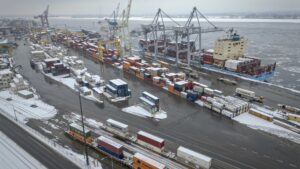Understanding Tariffs in U.S. History: A Focus on the Recent Trends
At Extreme Investor Network, we’re passionate about managing your personal finances and understanding the economic landscape is a crucial part of that. One topic that’s gained considerable attention in recent years is the use of tariffs. With President Trump’s administration reigniting the debate on trade policies, we take a closer look at how tariffs have shaped U.S. economics historically and what they mean for you today.
The Evolution of Tariffs: A Historical Perspective
From the dawn of the Republic to contemporary times, tariffs have been a fixture of U.S. economic policy. The Tariff Act of 1789 marked the nation’s first significant foray into trade taxation. This act was primarily aimed at generating revenue for the nascent federal government, and, as Dartmouth College economist Douglas Irwin highlights, tariffs have traditionally served three main purposes: revenue collection, restrictions on imports, and reciprocity in trade negotiations.
Revenue: The Early Uses of Tariffs
In the early years, tariffs were vital for funding the government. During the first third of U.S. history, they accounted for over 90% of federal revenue. However, with the advent of other tax mechanisms, such as excise taxes and eventually the income tax created in 1913, the reliance on tariffs waned. By the early 20th century, tariffs contributed about half of federal revenue, a stark contrast to contemporary times, where tariffs cover only a fraction of government expenditure.
Tariffs as Protection: The Shift to Restrictions
From the Civil War to the Great Depression, tariffs transitioned into tools for restricting imports, designed to protect emerging domestic industries. A notable example includes the Smoot-Hawley Tariff of 1930, which levied steep tariffs on nearly 900 goods, drastically impacting international trade.
After World War II, the focus shifted again towards the principle of reciprocity. The creation of organizations like the World Trade Organization (WTO) facilitated lower tariffs and fostered a global trading environment, emphasizing cooperation rather than competition.
The Expanding Role of the Presidency in Tariff Policy
Historically, Congress held the power to regulate tariffs until the Reciprocal Trade Agreements Act of 1934 significantly expanded presidential authority. This shift allowed presidents to negotiate tariffs under certain conditions, paving the way for increased executive discretion in trade policy.
Trump’s Unique Approach to Tariffs
While previous presidents employed tariffs primarily to protect specific industries, Trump’s strategy marked a departure. For instance, he imposed a 10% additional tariff on all Chinese goods and threatened further tariffs on Canadian and Mexican imports. This sweeping approach is unprecedented in modern U.S. history, taking a broad-brush stance instead of targeting specific sectors.
Economists note that such use of tariffs may await a thorough examination of trade relationships. Unlike predecessors who adhered to global trade agreements, Trump utilized unilateral measures, creating uncertainty in both domestic markets and international relationships.
The Implications for Your Personal Finance Strategies
Understanding tariffs and their potential outcomes on economic trends is crucial for anyone interested in personal finance. Here are a few key considerations:
-
Price Fluctuations: Tariffs can lead to higher prices on imported goods, potentially squeezing consumer budgets. Consider how rising prices may affect your purchasing behavior and overall spending plan.
-
Investment Opportunities: The industries most affected by these tariffs can create investment opportunities or risks. For instance, domestic manufacturers may benefit while consumers of imported goods face increased costs.
- Global Economic Perspectives: As global trade dynamics shift, staying informed can help you navigate investments wisely, especially in international markets that could be affected by U.S. trade policy.
At Extreme Investor Network, we believe knowledge is power. By understanding how tariffs function and their historical context, you can make better-informed decisions for your financial future. Stay tuned for more insights into how economic policies shape our everyday lives and what you can do to secure your financial well-being.

